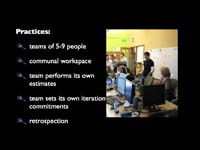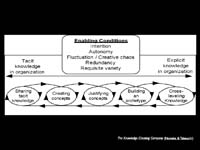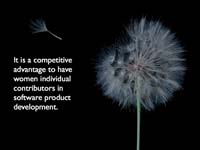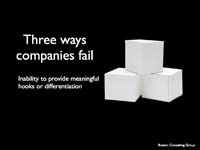These are notes from my presentation at the Hawaii International Conference on System Sciences (HICSS) #45.
I’ll link to my full paper when it is available and to subsequent posts as I publish them.
Agile values, product innovation and the shortage of women software developers Part 5 of 7

(29) Antidote to hostile workplace and the alpha geek
“Alpha male techies have minimal social skills and can be awkward around women, but this awkwardness coexists with enormous arrogance[45].”

(30) Problem statement
As an example, at a recent Ruby on Rails conference, a presenter contrasted using particular document oriented database to performing like a porn star: In reaction to the controversy Martin Fowler wrote: “The nub is that whatever the presenter may think, people were offended… It doesn’t matter whether or not you think the slides were pornographic. The question is does the presenter, and the wider community, care that women feel disturbed, uncomfortable, marginalized and a little scared.” 63% of women in tech report they experience sexual harassment

(31) Value statement
Agilists should be a voice in opposition to the alpha male in their midst and here’s why: “The best architectures, requirements, and designs emerge from self-organizing teams.” Not chest thumping individuals.

(32) Description of self organization
Self-organization is a fundamental value in Agile. A performing Agile team organizes itself around the work collaborating in high trust according to a set of mutually arrived at expectations and norms of behavior.

(33) What does self-organization feel like?
Another quote from Jeff Sutherland: “Team members share a sense of purpose, vision, and passion for their work. Teams that recognize that we are not simply individuals working in close proximity, but a team where we must all be engaged with one another’s work. (Jeff wrote He) tells teams looking to achieve amazing results that each member of the team must care as much about their neighbor’s work as they do their own.”

(34) Enterprise support for self-organization is also an Agile value
“Build projects around motivated individuals. Give them the environment and support they need, and trust them to get the job done.”

(35) Practices that support self-organization
In emphasizing Agile values, I’m not saying the practices are not important. They support the values. A company instilled with the value of self-organization should: keep team size between 5-9 people, provide communal workspace, rely on the team to do its own estimates and form it’s own iteration commitments. The team must frequently and consistently reflect on what it can do and what it must ask of the organization to make itself more effective. They must drive incremental improvements into the organization based on this.

(36) How is self-organization an antidote to alpha geeks?
A self-organized team will not tolerate a hostile or demeaning attitude towards co-workers or the business people upon which it depends for work. They will deal with each other with respect and a great deal of honesty. They have difficult conversations with each other and they address their own bad behaviors in order to fit into the norms of the team in order to maximize team performance. So, the ultimate answer for the alpha male who breaks the cohesion of the team, is he either modifies his behavior based on frequent and regular feedback from his peers and coaching from his leads or he is off the team.
Next: Antidote the diving catch culture of heroics and privileged roles…
Previous: What Agile principles demand we confront this problem?
All slides published to date.
There is abundant research on the problems women face in our field. I would love researchers to jump in on whether Agile principles and Agile practioners can really make a difference.
I’d also love any suggestions of organizations, institutions and individuals I might reach out to for more information, collaboration, or to take up the cause.
The full citation list for my paper.

































